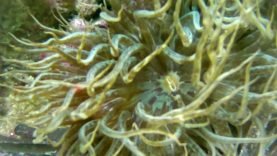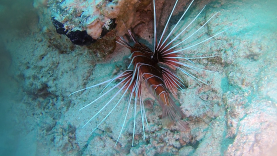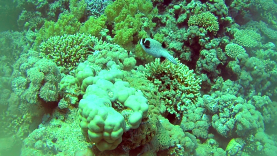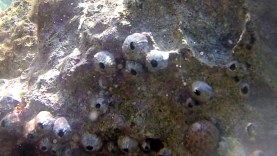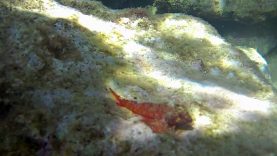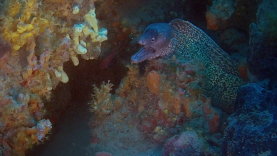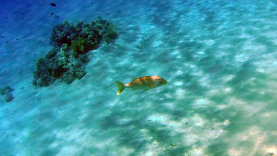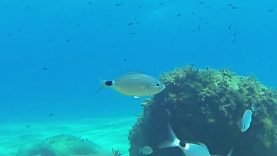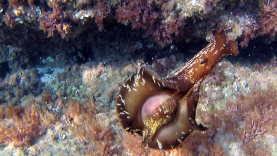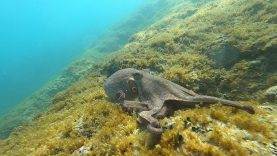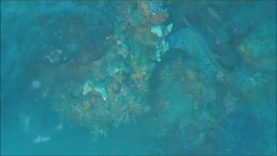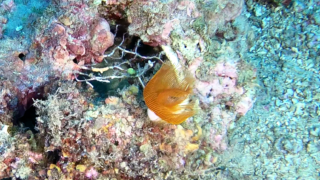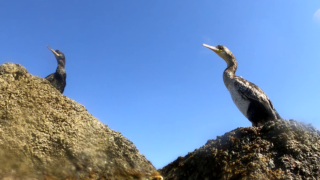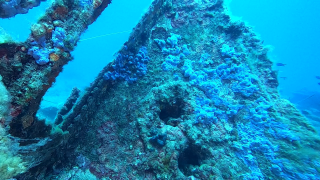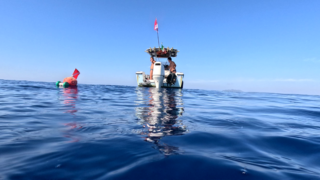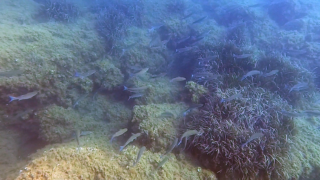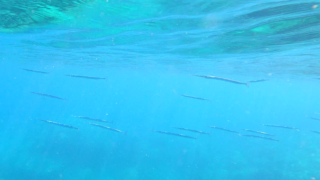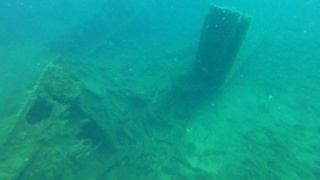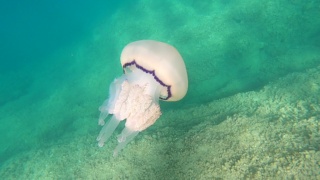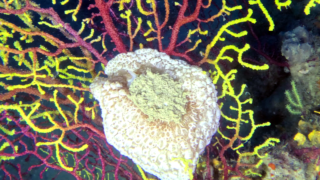The Mediterranean Moray
The Mediterranean Moray (Muraena helena). It is widespread in the Mediterranean Sea and the eastern Atlantic (from the South of England to Senegal, including the coastal areas of the Azores, Madeira, the Canary Islands, and Cape Verde), where there are reef or corals devoid of sedimentation and rich in ravines at depths between 5 and 50 meters. Juvenile individuals are often found in very low water. la murena mediterranea intotheblue.it

Like all the anguilliforms the Moray has serpenti form body. It is a “snake” with a long and robust body, the jaws are thin but powerful, the eyes are small and circular. The teeth are long and razor sharp. The skin is smooth and without scales, the dark brown color is mottled by yellow and whitish spots. The maximum length can reach one and a half meters and the weight up to 15 Kg. The reproduction takes place in the winter months and the eggs are pelagic.

The Moray eel feeds on fish, crustacean and cephalopods which it catches, often during the night when it comes out of its lair, with incredible violence demonstrating its aggressive character. As with all anguilliform fish, its blood is poisonous but the poison disappears with cooking. He lives in the rocky cliffs where he can easily find refuge in the caves and in the ravines, but if there is a wreck of a sunken ship in the surrounding area he takes advantage of it to make us his ideal refuge by hiding among the plates because it is easier to get find food there.

The Moray is a rather shy animal and if disturbed tends to flee inside the burrow or between the surrounding rocks; however it can attack even without being provoked because of its territoriality. It is particularly risky the habit of certain divers to offer food to moray eels with their hands. The bite of the Moray is very painful but it is not certain if there are toxins in the saliva. Toxins able to provoke hemolysis are certainly present in the blood of the Moray and numerous other anguilliforms such as eel and conger. These toxins, of a protein nature, are only active if they are introduced into the bloodstream of humans while they are harmless for ingestion. They are still inactivated by cooking.

